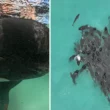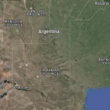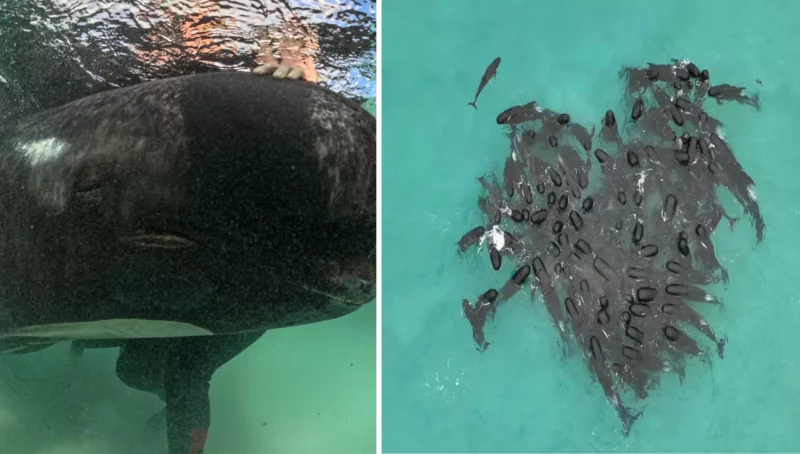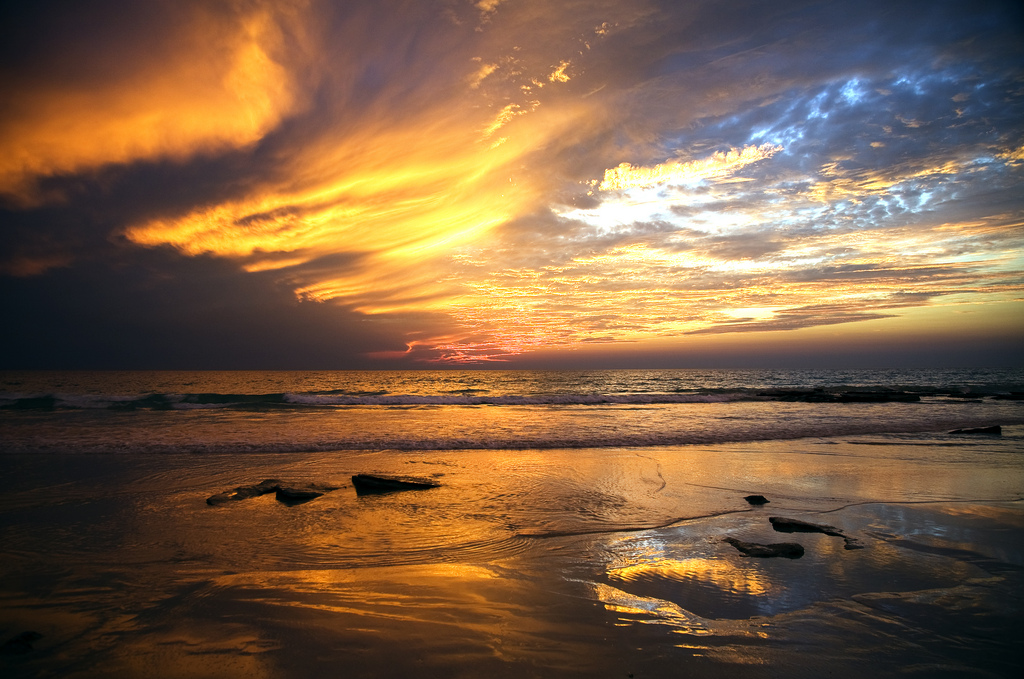In a stunning yet tragic event, a pod of almost 100 whales formed a heart shape off the coast of Cheynes Beach in southern Western Australia before disaster struck. The heart-shaped formation was captured in breathtaking images by the Parks and Wildlife Service last July.
The DBCA Parks and Wildlife Service Albany District quickly responded to the scene to monitor the whales’ movements. They urged the public to keep their distance and avoid getting too close to the marine mammals. Despite their efforts, the heartwarming scene took a tragic turn as the whales began to beach themselves.
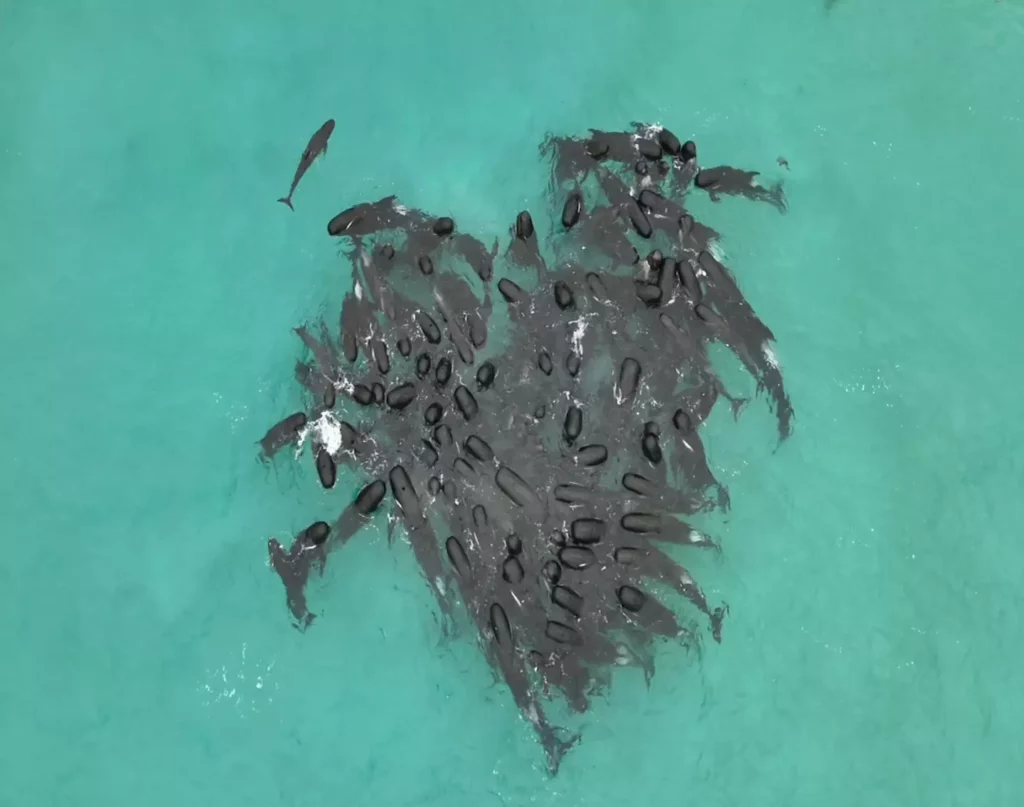
The whales, unknowingly forming a heart in the ocean, were soon stranded on the sand. DBCA officers, alongside numerous volunteers, worked tirelessly to manage the incident. A specialized team, including veterinarians from Perth Zoo and marine fauna experts, was dispatched to the scene.
Marine biologist Dr. Vanessa Pirotta described the sight as ‘incredible’ but admitted that experts have ‘no idea’ why the whales intentionally approached the beach. “I personally have never seen anything like this. Pilot whales are largely an offshore species. They are very social and hang out together. But like this? This is super unusual,” she said.
Despite having specialized equipment, including vessels and slings, the response teams faced a heartbreaking outcome. Sadly, 51 whales died during the incident. The Parks and Wildlife Service, along with registered volunteers and other organizations, continued to work tirelessly to return the remaining 46 whales to deeper waters.
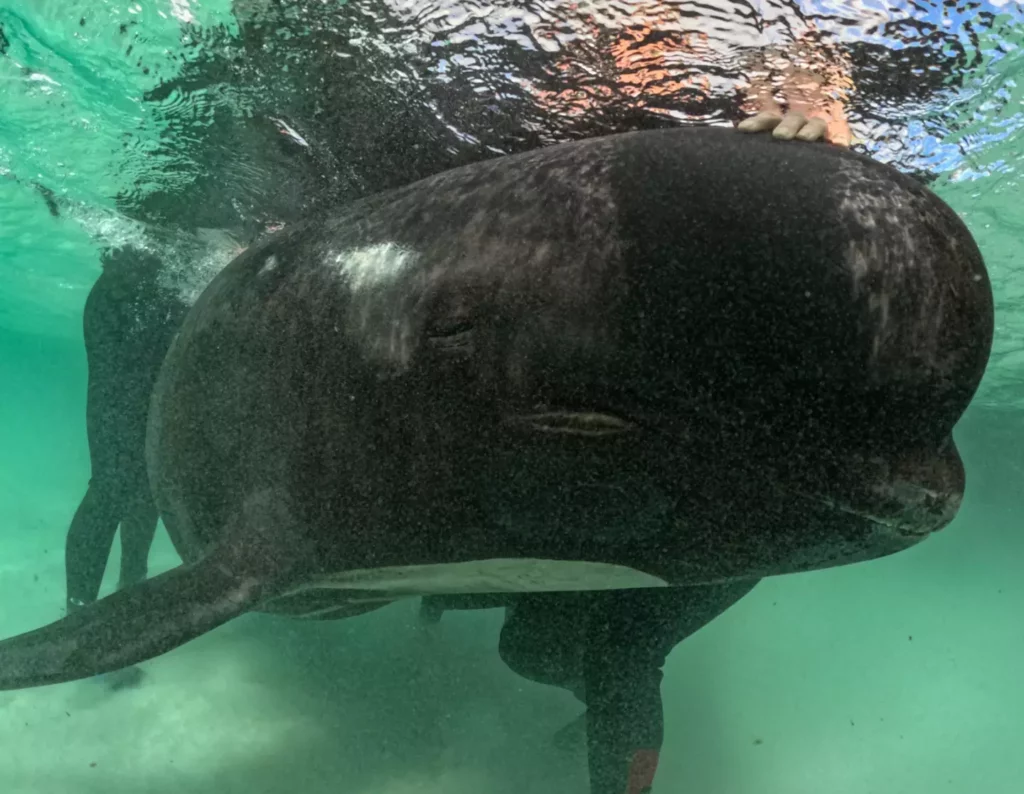
In a Facebook post, the Parks and Wildlife Service expressed their gratitude for the overwhelming support and offers of help: “Thanks so much for the messages of support. The Parks and Wildlife Service has been overwhelmed with hundreds of offers of help to rescue the stranded whales, and we now have enough registered volunteers.”
For safety reasons, the public was urged to stay away from the beach. “The priority focus of the Incident Management Team is to ensure the safety of staff and volunteers and the welfare of the whales. The response zone has a range of hazards, including large, distressed and potentially sick whales, sharks, waves, heavy machinery, and vessels.”
Dr. Pirotta suggested some possible reasons for the stranding, including the possibility that the whales gathered around a sick member of the group, experienced navigational problems, or moved to avoid orcas hunting nearby.
The incident has sparked a renewed interest in understanding why such mass strandings occur. Researchers are now delving deeper into the behaviors and environmental factors that might lead to these tragic events. The hope is that with better understanding and advanced technologies, future strandings can be prevented, or at least better managed.
Additionally, the community’s response to the stranding event highlights the importance of public awareness and readiness in handling wildlife emergencies. The swift mobilization of volunteers and experts serves as an inspiring example of human compassion and dedication to animal welfare. This tragic yet poignant event underscores the need for continued conservation efforts and the vital role of each individual in protecting our planet’s marine life.
**Please note that this post may contain affiliate links. When booking through one of our links, we earn a small kickback at no extra cost to you and it’s a big help to keep the site up and running.


